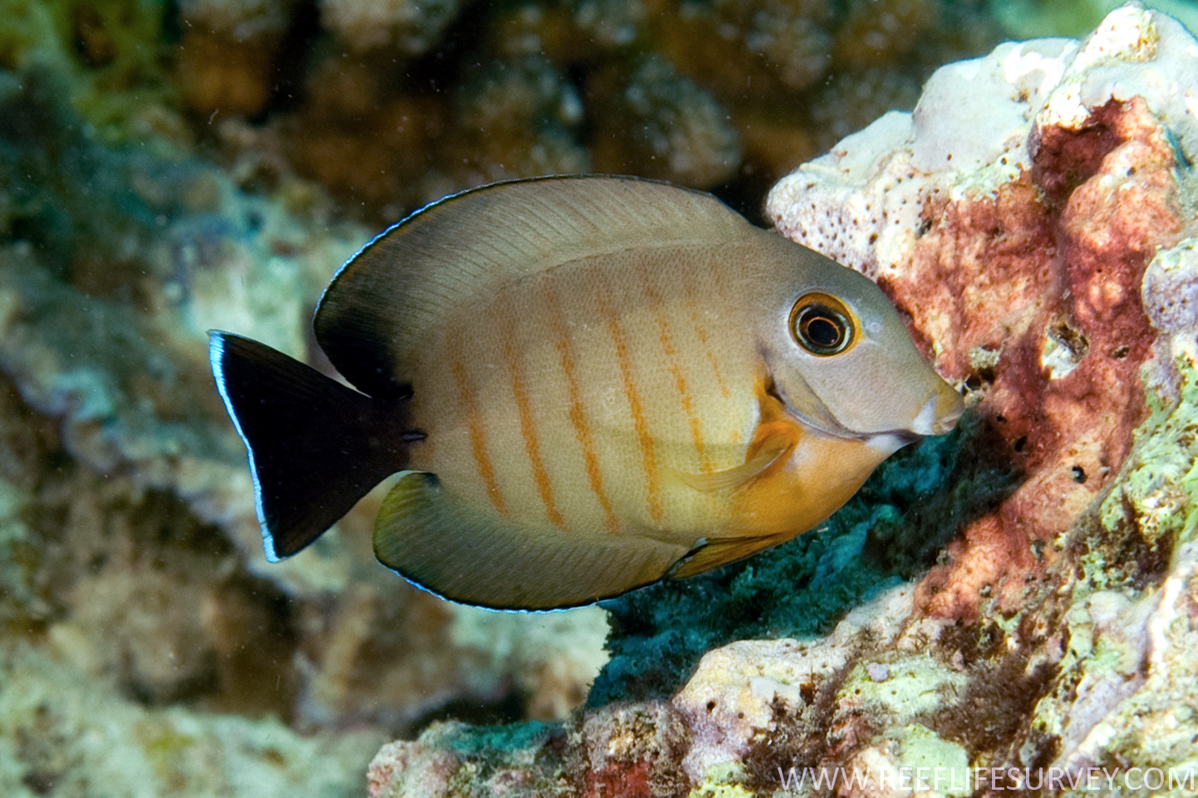Having kept all the usual tangs in our home aquariums over the years we wanted something different for our latest tank, and settled on one of the Mimic tangs, Acanthurus tristis. Like its cousin Acanthurus pyroferus, which mimics either Halfblack or Lemonpeel angels as juveniles, A.tristis mimics the color and pattern of the Red stripe angel, Centropyge eibli, which it does with amazing accuracy, not just with the orange stripes on the beige colored flanks but the orange breast, orange ring around the eye, the orange rim to the dorsal and anal fins, and even the black tail with a bright blue edge. The smaller and younger they are, the better the tangs mimic the angelfish, even to the point where someone asked me which was which when presented with both in my LFS.
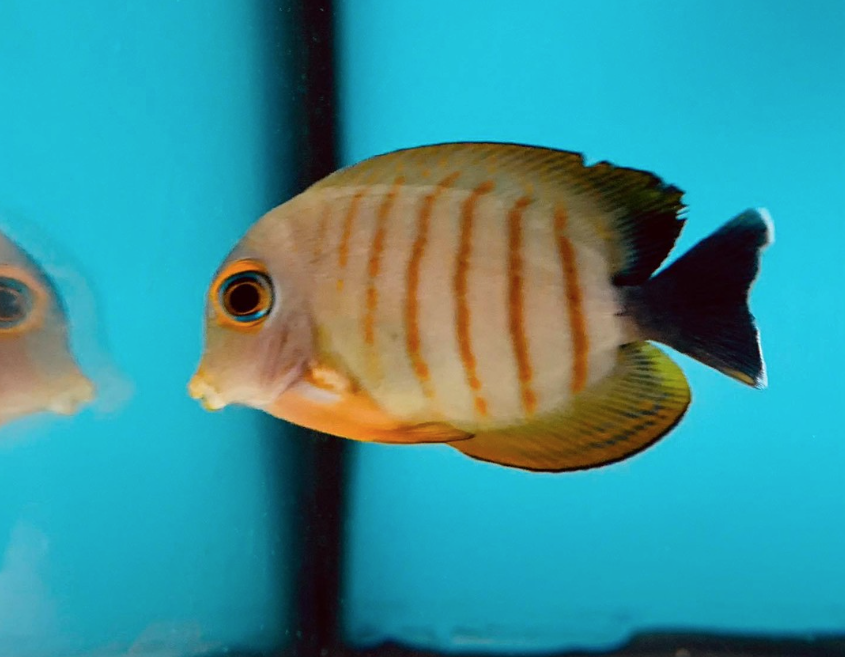
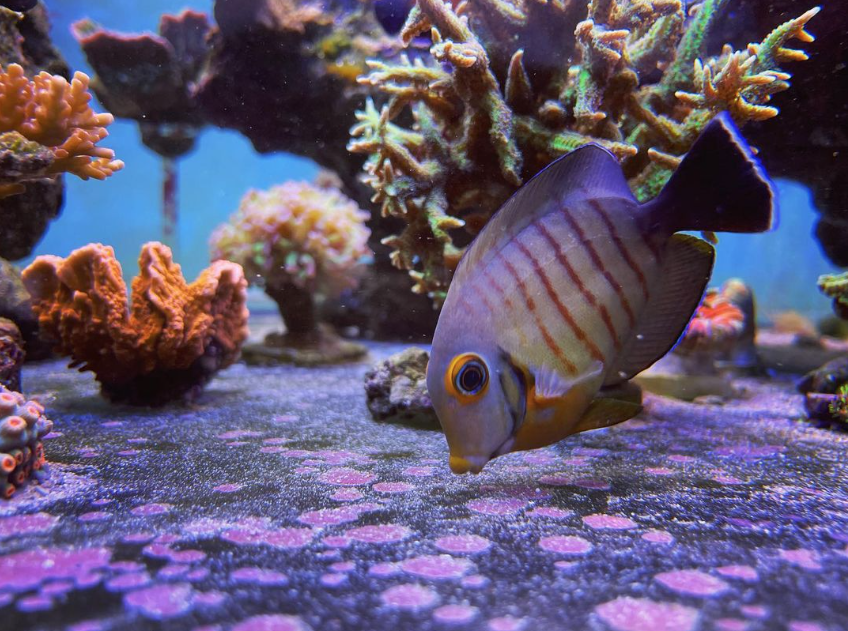
Batesian mimicry
The phenomenon is known as Batesian mimicry, where one animal evolves to look like just another in order to avoid predation. Only angelfish and surgeonfish are about equal in the weaponry stakes, the surgeons carrying the scalpel on either side of the caudal peduncle, and the angels a similarly sized spike on their gill covers. This isn’t a case of a non-venomous animal resembling a venomous one and is definitely deserving of further study, but either way, in the parts of the Indian Ocean where A.tristis lives next to C.eibli, and in the Indo-Pacific where A.pyroferus cohabits with either C.flavissima or vroliki, at a size between 1-3”, there seems to be a survival advantage to hanging out in nooks and crannies, looking like a dwarf angel, and not like a tang.
This offers the aquarist an advantage too, with eibli nipping at corals, and being beautiful but not 100% reef safe, versus the mimic which is reef safe, and a really good algae grazer to boot. As good as a Bristletooth tang…
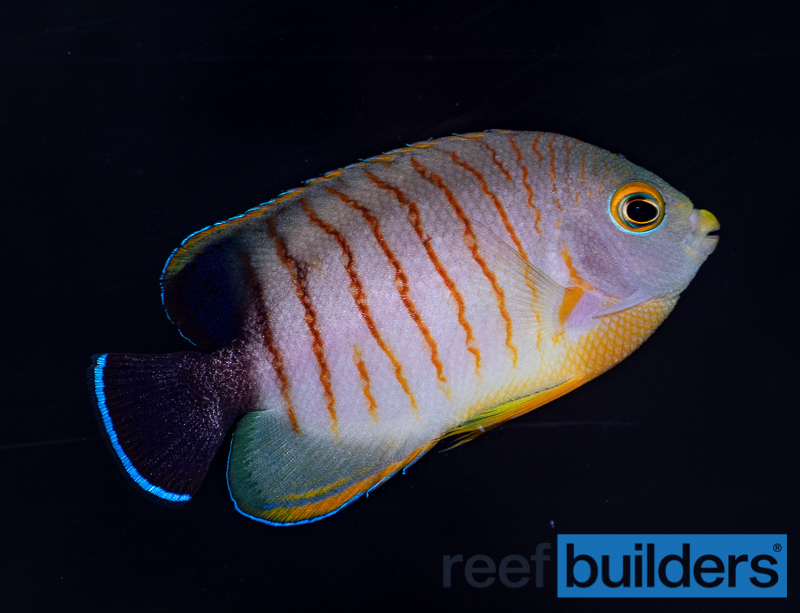
Fade to grey
The downside, however, and the only reason these tangs aren’t way more popular is that as they grow beyond 3”, Acanthurus tristis start to lose the dwarf angel patternation and gradually morph into a grey fish, albeit a lyre-tailed one, but in terms of color they end looking much more like a Vampire tang, A.tennentii, which some will be happy with, while others will opt for the riot of color offered by adults of other surgeonfish species. A.pyroferus is more colorful than A.tristis as a mature adult, so you could opt for one of those instead.
Ours is currently at that 3” mark, and although the orange ring around the eye is starting to disappear and the vertical orange stripes less vivid, the black, blue-rimmed tail is still very prominent and the face is looking decidedly blue, in a good way. The fish is very peaceful, not territorial, grazes the rockwork all day long, hasn’t fallen ill to any parasites, and is maintaining weight and growing.
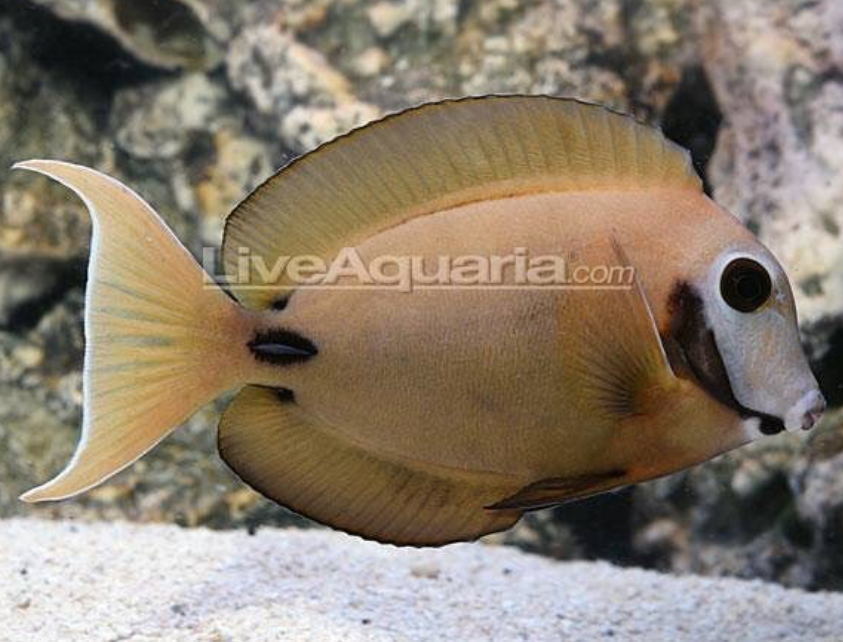
Tank size
For tank size, we wouldn’t house a Mimic tang in anything under five feet in length. We held our fish in a three-foot tank when it was just two inches long, but even then it was prone to pacing up and down the same end pane of glass, looking like it wanted to swim on. The Tang Police is a real organization (Yellow tangs and Kole tangs are currently banned after all!) and Acanthurus, including this species, need space, strong water current, and environmental enrichment in the form of lots of rock surfaces to graze, just like they do in the wild. Ours feeds on frozen foods, pellets, and of course algae. Newly imported specimens will benefit from a proprietary worming treatment before entering the reef tank and are relatively inexpensive as surgeonfish go. Give one a try!
Main Image credit Irán V. Shaw, CC BY 3.0 AU


